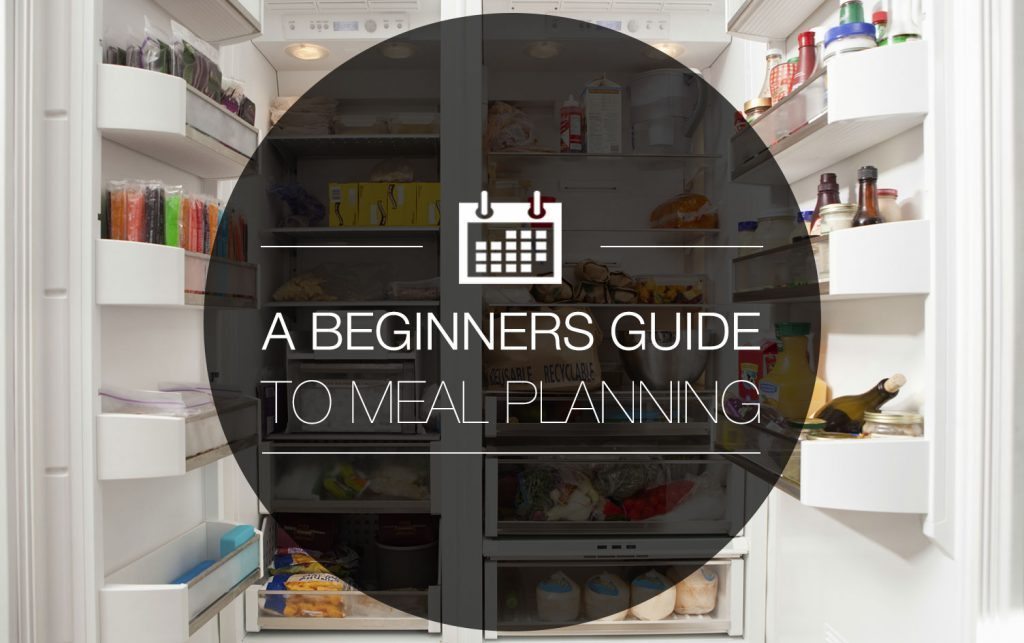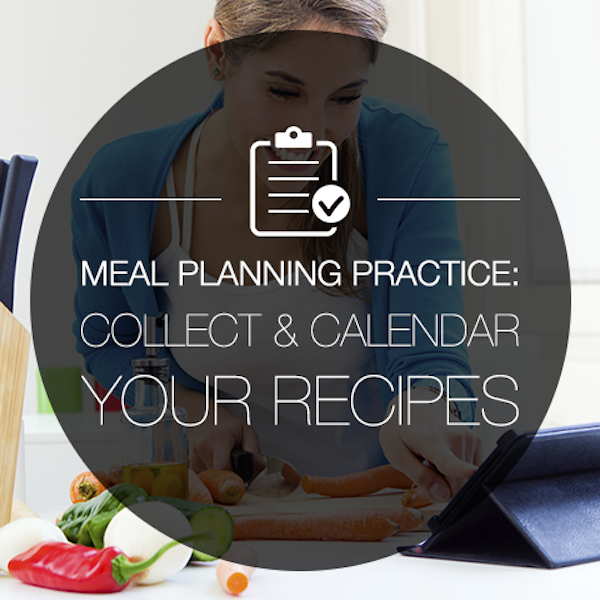
When it comes to eating well, meal planning is one of the easiest things you can do to set yourself up for success. The beauty of it is there are no rules and you can’t really mess it up. The key is just to start, and to set aside a little bit of time each week to do it. There are so many ways to approach meal planning that, after practicing just once or twice, you’ll begin to find what works for you and your family.
To help you get started, we’ve broken down some of the basics. We’ve even included two practice exercises to help you map out your next week’s worth of healthy meals.

Our eating situations can vary greatly from week to week depending on work schedules, after-school activities, evening commitments and travel plans. Here are some things to consider as you assess your eating situation.
HOW MANY MEALS YOU NEED TO PLAN FOR
Take a few moments to think about what you have going on next week. Taking a quick inventory of everyone’s plans will quickly give you a rough idea of how many meals you’ll need to get through the week, and how much mileage you can get from each recipe or dish.
WHAT YOU HAVE TIME FOR
If you have a crazy busy week coming up, make a mental note to be on the lookout for quick, slow -cooker or make-ahead meals that can served up in a hurry. We’re big fans of the cook once, eat twice (or thrice) approach.
YOUR FOOD MOOD
Things like the weather, a change in seasons and food cravings can impact what sounds good on any given day. Thinking about these things beforehand will make recipe-selection process faster and meal times easier on everyone.
YOUR GROCERY BUDGET
If you want to eat better for less (and who doesn’t?), think seasonal produce and sales. Check out these 6 ways to meal plan to help you budget better.
MEAL PLANNING PRACTICE: MAP OUT YOUR WEEKLY EATS

1. GRAB A PEN AND PAPER
Write the days of the week on the left side of the page and the meals you want to plan across the top.
2. SKETCH OUT YOUR WEEKLY EATS
Vague descriptions like quick dinner, leftovers, or packable lunch are fine for now. Don’t forget to plan for leftovers and make note of special dietary restrictions here too.
3. TALLY THEM UP
Note how many meals you’ll need for the week, grouping together similar ones. For example: 2 quick dinners, 3 packable lunches and so on.

Now the fun part! Once you know how many meals you’ll need, find some healthy recipes and then fill in your calendar for the week. Here are some tips to help:
CREATE A MASTER RECIPE LIST
Having a list of go-to meals is one of the easiest ways to expedite the meal planning process. Consider trying one or two new recipes and use a few old favorites to fill in the gaps. Every time you find a new meal you love, add it to the rotation.
FIND A FEW NEW DISHES TO TRY
Finding delicious, healthy recipes isn’t hard — you just need to know where to look. Health-conscious cookbooks and food magazines are great, but the internet has an abundance of healthy recipes at your fingertips.
SAVE AND ORGANIZE YOUR RECIPES
FOR ONLINE RECIPES
- Add them directly to your MyFitnessPal recipe box, either on the web or within the app. Our recipe tool even calculates the nutrition facts for easy logging later.
- Create a healthy recipe Pinterest board. Check out ours for meal inspiration.
FOR PAPER RECIPES
- Create a three-holed binder with plastic sleeve inserts to organize recipe cards and meals pulled from magazines.
- Use bright-colored tabs to flag favorite cookbook recipes.

CREATE YOUR MEAL CALENDAR
Regardless of what format you prefer, the key here is to fill in your calendar with specific meals. Meal planning pro and Cook Smarts founder, Jess Dang, says, “Good meal planning is like putting together a puzzle. Try to avoid selecting different recipes that don’t fit together or else you’ll be buying a lot of different ingredients. Select one, look at the ingredient list and let that help you select recipe #2, and so on.”
Whether you use a notecard, a printable template or go digital, it’s a good idea to keep a paper copy of your calendar in plain view, such as on your fridge. “Making your meal plan visual may hold you more accountable for executing on the cooking. Plus, your family isn’t constantly asking you, “What’s for dinner?” They can just refer to the board,” adds Jess. If you need some ideas, check out Pinterest for visual meal planning boards.
If you prefer going digital, create a sub-calendar for your meal plan in Google, Outlook or your calendar application of choice and share it with family members or roommates so everyone knows the plan.

WRITE YOUR GROCERY LIST
Save yourself by writing your grocery list while you fill out your calendar. And don’t forget to jot down quantities for each ingredient! Before you head to the store or order your groceries, take a quick inventory of what you have on hand and cross off the ingredients you don’t need to purchase.
MEAL PLANNING PRACTICE: COLLECT & CALENDAR YOUR RECIPES

1. START A MASTER RECIPE LIST
Digital versions (like a note on your smartphone) are handy, easy to update and usually within arm’s reach.
2. FILL IN YOUR CALENDAR
Pick some favorites from your master list and 1 or 2 new recipes to try.
3. WRITE YOUR GROCERY LIST
While doing that, jot down ingredients for each recipe. Then, take stock of what you already have on hand before heading to the store.
4. PICK A TIME TO SHOP
Once your shopping is done, start meal prepping for the week. Et voila!
Got some meal planning tips and tricks of your own to share? Leave them in the comments below!
The post A Beginners Guide to Meal Planning appeared first on Under Armour.
(via MyFitnessPal Blog)







